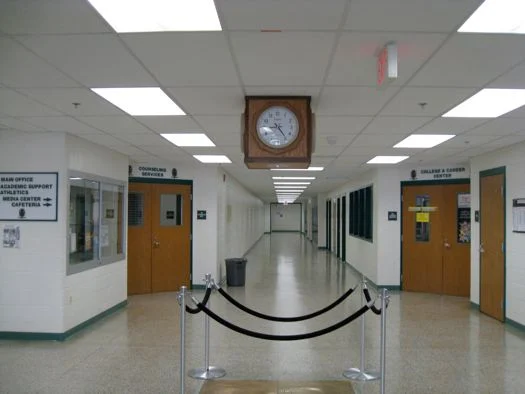Approximately 3,000 students fill WJ’s hallways every day; nearly 150 classrooms, two gyms and more than 15 portable classrooms are flooded by students day in and day out. At least, that’s what the MCPS administration’s idea is of the school day. In reality, many of these classrooms often contain empty desks and red marks on the attendance sheet. A New York Times survey reports that up to 15 percent of American children are chronically absent from school. However, the dilemma of attendance goes beyond just students’ laziness.
Most teachers only see their students inside of the school. However, the classroom is only one part of a student’s life. Family obligations, sports and jobs also interfere with a student’s time. Junior Lana Eganova expressed concerns that students have so much thrown at them, they’re overwhelmed.
“It’s not that we don’t care,” Eganova said. “A lot of us have other extracurricular and academic commitments, and I don’t think teachers understand that we simply don’t have the bandwidth to juggle so many things and stay perfect.”
Senior Annabel Kotek feels that conflicting obligations contribute to inconsistencies in attendance.
“Some teachers feel their class is the only class,” Kotek said. “Coaches expect that your sport is your life. Most prestigious clubs expect 100% dedication. It’s a lot, and we don’t have enough breathing room.”
“I’m totally against [cutting class],” security guard Robert Montgomery said. “But we never know what a student’s going through at home. It all boils down to a communication problem between faculty and students as well as parents.”
Another major problem is that MCPS’s attendance rules can be easily taken advantage of. Official attendance policy states that five or more unlawful absences can warrant a failing grade, with a student receiving an “E3” grade, which means that the student failed to live up to the required attendance. But this policy is rarely exercised. A 10% absence rate can warrant a letter from the principal. However, this can only be enforced with full-day, unexcused absences. The MCPS Student Rights and Responsibilities handbook states that students are marked as present if they’re in attendance for more than 50% of the school day, and present for half a day if they’re present for more than 10% of the day. Which means a student could miss three periods a day and still be marked as missing no days of school. And even if they do, the county requires a handwritten note to excuse an absence, which students can easily forge. They could get a warning from the teacher for missing their specific class, but as long as their grades stay up, there’s no valid grounds for action.
Adam Zeitlin teaches AP English Literature & Composition and is familiar with WJ student culture as a former physics teacher, as well as a graduate.
“It happened when I was a student, but there were greater consequences for missing class,” Zeitlin said. “I don’t really judge someone for it, but you will miss stuff, so it is important to try your best to be here.”
When asked about the issue that causes absences, Zeitlin agreed that many students just felt overwhelmed, not that they didn’t care about the class or their academics.
Students have been skipping class for nearly as long as the institution of education has existed, but it looks like the issue won’t be solved until a policy reform or adequate communication with a student’s household.









